Edged Out: The fight for the heart of a South Bethlehem community
This article was produced as part of a project for the USC Annenberg Center for Health Journalism’s 2021 National Fellowship, which provided training, mentoring, and funding to support this project.
Other work by Sara Satullo includes:
Are you a renter in Southside Bethlehem? We want to hear from you.
2 new projects slated to bring 95 new apartments to Bethlehem’s 4th St.
Will we recognize South Bethlehem after a real estate boom and pandemic? Introducing Edged Out.
Deal gives displaced South Bethlehem residents, businesses more time
Lehigh’s growth exposes a hard reality about South Bethlehem’s real estate market
South Bethlehem is a collage of cultures. Residents wonder if that can continue.
The fallout when you’re Edged Out
Bethlehem Southsiders show ‘striking’ love of community, optimism about future, forum report says
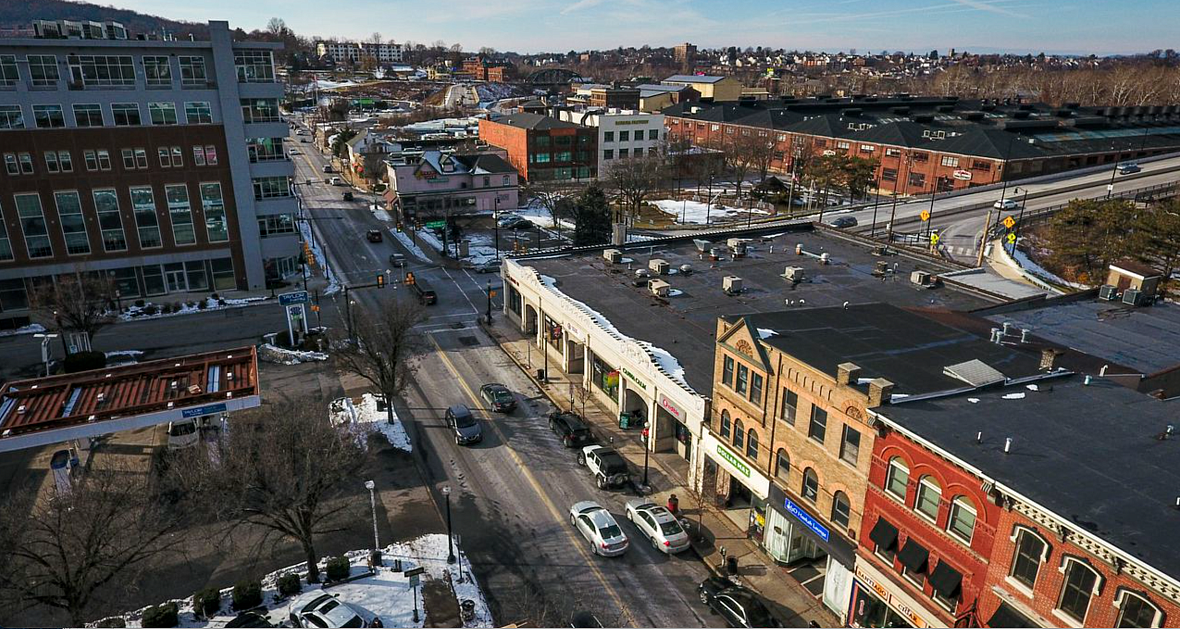
The core of South Bethlehem's downtown is centered upon Third and Fourth Streets, which are bisected by New Street, a critical neighborhood gateway.
(Photo by Saed Hindash | For lehighvalleylive.com)
[Part 1]
[To read this story in Spanish, click here.]
At 17, Cindy Rivas started working at South Bethlehem’s Car Village Title and Notary. Today, the 37-year-old is the owner.
But a proposed 9-story development on the site of her South New Street business has left Car Village’s future in limbo after 46 years on the city’s Southside. She’s been served eviction papers as the storefront she rents is slated for demolition.
“It is stressful,” said Rivas, who grew up in the neighborhood and bought the business in 2012. First her rent jumped from $800 a month to $1,000, then the building sold. Looking for a new location has been tough, with some commercial landlords in the area charging $3,000 or more a month for first-floor commercial space. It’s a tall order in a community with a median household income around $40,000 and a poverty rate of nearly 28%.
“We want to stay in the Southside. We have to reestablish ourselves and there’s no money. All the money goes to the landlord.
Her business sits on one of South Bethlehem’s most hotly contested blocks. South New Street acts as a gateway from the city’s more tony Moravian Historic Downtown north of the Lehigh River to the Southside, the northside’s funky younger sister. The Southside is home to the $73,250-a-year Lehigh University along with an arts district and casino where Bethlehem Steel once forged the I-beams that helped build 20th-century America. South Bethlehem today remains a working-class neighborhood built and cherished over decades by waves of immigrant workers.
The Southside’s own historic downtown offers a smattering of locally owned shops and ethnic eateries along Third and Fourth Streets, which bisect New Street from east to west. The arts district and casino have fueled a Southside resurgence that’s added higher-end restaurants and breweries to the mix with local favorites like Jenny’s Kuali and La Lupita. The revival is drawing record investment to the former industrial hub with almost 700 high-end apartments recently completed or currently in the pipeline. By last fall, the median residential rent in the 18015 ZIP code that encompasses South Bethlehem had risen 34% to $1,651 since January 2019, according to Zillow data.
Some of the new units are proposed for the site of Rivas’ business.
La calle South New Street se refleja en la ventana delantera de Car Village Title and Notary. La calle actúa como una importante puerta de entrada al centro comercial de South Bethlehem, haciendo que su futuro sea objeto de acalorados debates. Los residentes y los desarrolladores inmobiliarios difieren sobre cómo debería verse. Saed Hindash | Para lehighvalleylive.com
Her dilemma on this block in transition typifies how developers’ visions for the neighborhood can conflict with the wishes of many longtime residents. The Southside’s major developers are pitching urban infill projects with luxury apartments and high-end retail aimed at college students and young professionals with disposable income. Residents interviewed by lehighvalleylive.com want smart, sustainable development that prioritizes truly affordable, workforce housing while preserving the neighborhood’s rich character.
“I worry that people who have the influence through pocketbooks, if they aren’t connected with the neighborhoods they are making changes in, they could be damaging the way the community works without knowing it,” said Matt Hengeveld, a local coffee shop owner.
Such tensions occur in many cities, but they are particularly acute in Bethlehem, where Lehigh University sits in the middle of this hillside neighborhood and its heavily Latino, working-class population. The community has welcomed immigrants since its 1865 founding, resulting in a cultural mix responsible for a vibrancy residents fear is now at risk.
The coronavirus pandemic has ratcheted up this conflict in two ways: It’s created a red-hot real estate market that has high-end developers eying many Southside tracts, and created a keener equity lens through which neighborhood developments are evaluated. The equity focus makes many residents far less willing to resign themselves to a gentrified fate.
“This type of development is happening on the Southside because the land is cheap there,” said City Councilwoman Dr. Paige Van Wirt. “So, when we talk about equity, I think we also need to talk about how we handle development and preserving our (Southside’s} historic district.”
Car Village Title and Notary, en 323 S. New St., ha estado sirviendo a la comunidad de South Bethlehem durante casi 50 años. Saed Hindash | Para lehighvalleylive.com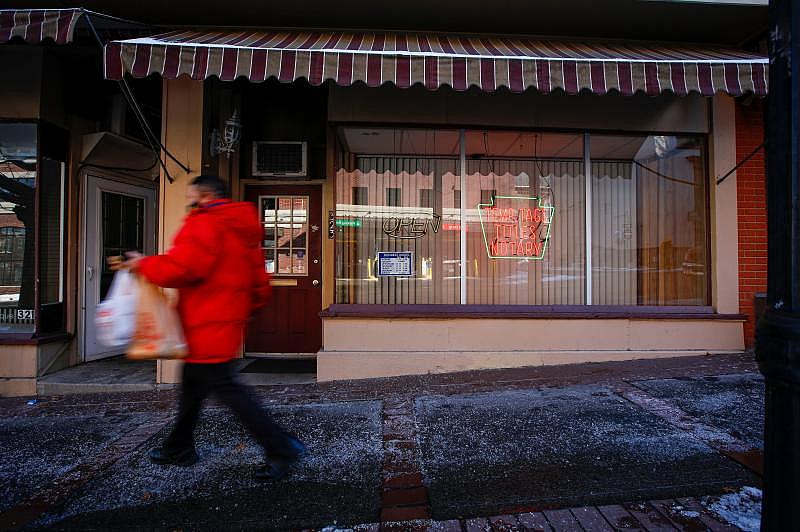
Rivas knows there’s no way to stave off demolition of the building that houses her storefront, portending the kind of displacement that vocal residents of Southside fear. She just hopes to relocate her business that’s served the community for nearly half a century. Her plight worries other residents.
“It is almost like we are trying to whitewash South Bethlehem when what has made South Bethlehem powerful, amazing and truly the star in the Lehigh Valley is that South Bethlehem was a diverse community always,” said Carolina Hernandez, resident and assistant dean and director of Lehigh’s community services office. “We are trying to erase all of that and make it white. And as a Hispanic person I am outraged by it.”
As a new mayor and progressive slate of city councilwomen assume office in Bethlehem, and we careen uncertainly into the third year of this pandemic, developers and residents agree the trajectory of this small commercial corridor will determine what the Southside becomes in the next generation. But they remain divided on how best to do that. Can this place remain the eclectic, slightly gritty and welcoming community it’s been for the last 150 years?
South Bethlehem mirando por la calle East Third hacia la antigua planta de acero Bethlehem Steel. Saed Hindash | Para lehighvalleylive.com
As the business district goes, so goes the Southside
The Southside’s never been mistress of its own destiny. The original borough grew in the shadows of Lehigh University and the former Bethlehem Steel Corp. The company’s labor demands brought wave upon wave of immigrants to South Bethlehem, who were attracted by the plentiful, if brutal, jobs once available at “The Steel” and the region’s garment mills.
Twenty-six years after the plant went silent, the neighborhood of South Bethlehem is home to about 20,477 people, a population that’s 42% Hispanic, a concentration well above the rest of Northampton County and Pennsylvania. The modern city of Bethlehem, population 76,044 and almost one-third Hispanic, formed in 1917 when voters approved unifying the borough and original Moravian settlement.
Puerto Ricans first came to the city in the 1940s. Today, many work in the booming warehouse industry or in service jobs. Migration from the Commonwealth continues today thanks to Bethlehem’s prime location — which makes it easy to fly back to Puerto Rico — and, until recently, its affordable housing.
Over seven months of interviews, community focus sessions and neighborhood canvassing, dozens of residents shared with lehighvalleylive.com their fears that the current luxury housing boom threatens South Bethlehem’s historical appeal as a welcoming, affordable landing spot for newcomers. They worry that development in their downtown will shred the fabric of the community they love. And that, once it’s gone, it cannot be regained.
“What happens to the people who have been struggling, working there, trying to make a living?” Rivas said of the sale of her rented space. “You get nothing. You don’t get a dime.”
It’s a top concern of Bethlehem City Councilwoman Grace Crampsie Smith: “Families are leaving. There are not a lot of neighborhoods where families feel it is conducive to having a family between the student housing and luxury rentals. We are losing the richness of the Southside.”
Of the 13 new residential projects planned or newly completed in the Southside, only one has any units designated as affordable. (That half dozen are destined for the site where Rivas’ business now operates.) Councilwoman Rachel Leon, who lives on Southside, worries luxury rent prices will lead other landlords to hike prices.
La nueva concejala de la ciudad, Rachel León es la única miembro que vive en South Bethlehem. Foto de cortesía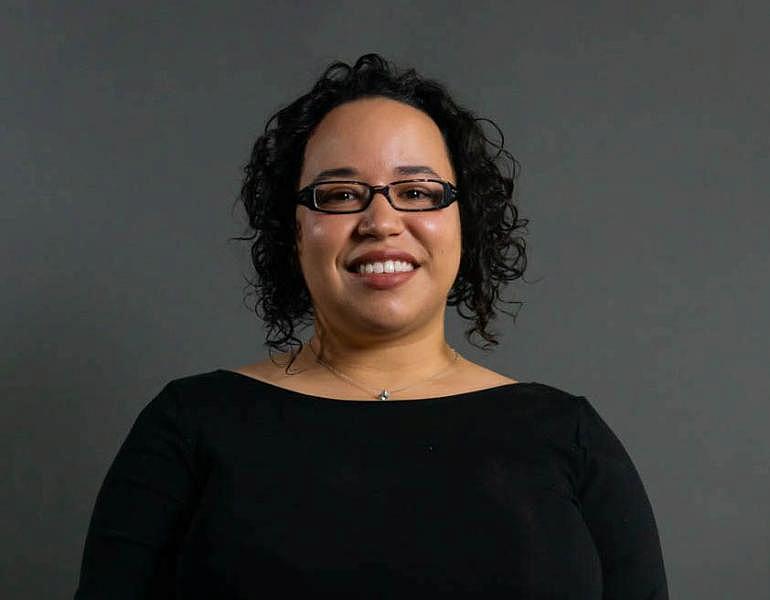
“How they price those apartments impacts the community around them,” Leon said of the new developments.
Experts say Pennsylvania’s planning laws make it difficult for localities to mandate affordable housing.
Developers argue that this housing influx, by adding inventory at various prices, will eventually ease the shortage of both lower-income and high-income housing inventory. The Lehigh Valley Planning Commission has found this overall shortage now leads to fierce competition among those at both ends of the income spectrum. It forces low-income households to spend more than they can afford due to limited housing in their price range.
“Shortages in several income brackets add pressure on the entire system, creating constraints everywhere,” the regional planning agency wrote in a February 2021 report assessing how and where the pandemic has put jobs and housing at risk.
The pandemic’s tendency to expose the gaps between haves and have-nots finds a vivid example in the Lehigh Valley’s — and Bethlehem’s — tight real estate market. Overall, 50% of Bethlehem residents own their homes, but only 30% of city Latinos and 23% of Blacks are homeowners, according to the U.S. Census.
“Every community where you have a vibrant market you have an affordable housing crisis,” said Alan Jennings, the recently retired executive director of Community Action of the Lehigh Valley. “The only way to solve that problem is subsidies and they’re expensive.”
Within the Bethlehem Area School District, 43% of owner householders and 57% of renter households spend more than 30% of their gross income on housing, something known as being cost-burdened.
El desarrollador de propiedades, Dennis Benner planea un proyecto de relleno urbano de siete pisos y 70 unidades en la calle 117 E. Fourth Street, en el lugar del antiguo Boys & Girls Club. Foto cortesía Architecture + Urbanism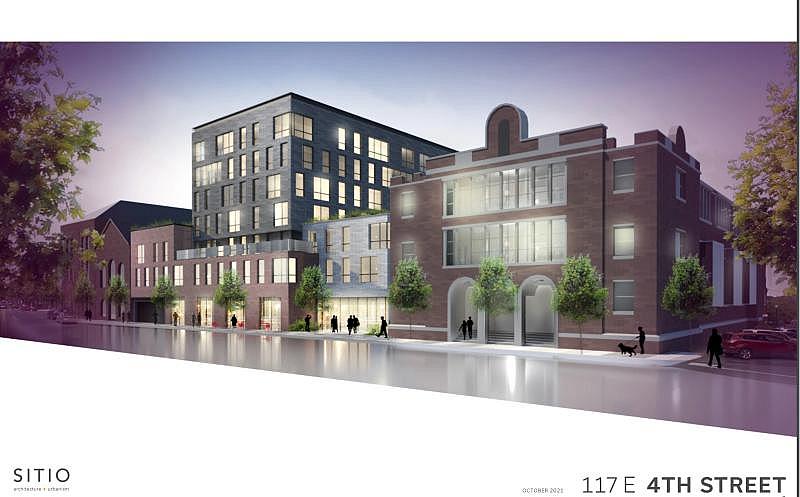
EDITOR’S NOTE: This is the first in a series of stories about South Bethlehem. Find all of “Edged Out” here.
The developers with plans for Southside tracts contend that if the city wants more affordable housing, it needs to allow dense, high-rise developments, a far cry from the modest, brick row homes that have housed generations of Southsiders. These new residents will become the customers that local Southside businesses desperately need, they say.
“There is room for affordable housing, but somebody has to pay for it,” said Dennis Benner, a developer and Lehigh alum, who served on the city’s affordable housing task force. “Somebody needs to step up. You need density and in an urban core that means height.”
But many residents respond towering buildings spoil the traditional historic streetscapes that make their community distinctive and appealing.
“It’s only because the people making decisions do not live here that they have no idea why Southside residents do not want any 12-story buildings incoherently scattered in the downtown,” said Seth Moglen, a 20-year Hillside Avenue resident, Lehigh professor and co-founder of the South Side Initiative.
The clash over building heights hit a crescendo last spring. The city unveiled a proposal to limit heights in the Southside’s central business district to 90 feet, which is actually less than now allowed by local zoning.
The proposal produced a backlash from residents, who didn’t perceive it as an improvement on the status quo, but as a nasty surprise and an affront to the community. The reaction spoke to the distrust many on the Southside feel both for their elected officials and the developers who want to reshape their neighborhood.
Roy Ortiz es padre de cinco hijos y súper voluntario en South Bethlehem. Dirige el Centro Comunitario de Lynfield en la vivienda pública donde vive, la Pequeña Liga Southside y forma parte de la Junta de Viviendas de la ciudad. Saed Hindash | Para lehighvalleylive.com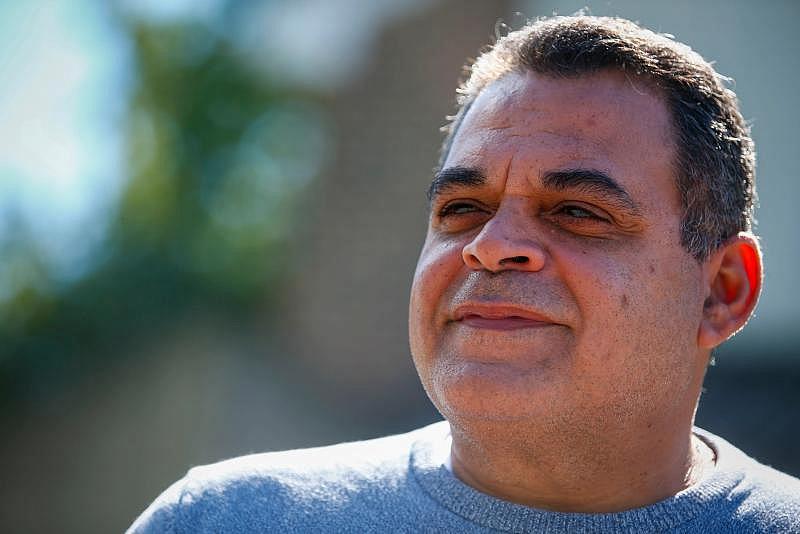
“They get discouraged. They don’t want to get involved,” said Rogelio “Roy” Ortiz, a former Bethlehem school board member, who runs the Lynfield Community Center in his Southside Bethlehem Housing Authority development and sits on the authority’s board. “They have no faith in the system.”
New Mayor J. William Reynolds recognizes that new developments, even when they rise on vacant lots or replace blighted buildings, often lead to feelings of cultural displacement for existing residents.
“The bigger question that I understand is, what is the identity of our city and what’s the identity of some neighborhoods in our city,” Reynolds said. “... I do believe some of these conversations about— should a building be 10 feet higher or not —they become a flashpoint for much larger, deeper feelings, some of which are historical, some that are very present.”
Many Americans are struggling and there’s a sense among some Southside residents that these developments aren’t for them, Reynolds said. Historically, the city has not done “a good enough job” working on the issues that are top of mind for its lower-income residents and it must do better, he said.
The world in a few blocks
The Southside’s filthy industrial origins and its reputation as the first stop for new immigrants forged a social stigma that persists today.
Its growth has waxed and waned with economic and international forces starting in earnest in the 1870s. First, Slovaks, Belgians, Irish, and Italians from Europe dominated, eventually creating its first housing shortage. Each new ethnic group built its own enclaves into the side of South Mountain, centered around churches and social clubs.
The ordnance demands of the first World War caused the city’s entire population to grow by nearly 300% in a decade. The Immigration Act of 1924 slammed the door on immigrants, then came the Great Depression and the next World War, when employment at the Steel peaked at more than 31,000 people.
Puerto Ricans first came to the Lehigh Valley in the 1940s filling labor voids in the Steel’s blazing coke works and in garment mills. They put down roots, establishing communities, like the immigrants who came before them.
Many fear this history as a welcoming and affordable place for newcomers is now slipping away. Or, worse, already lost.
“I love living here because it’s the place ‘those people’ live and I’m one of ‘those people,’” said Roger Hudak, 78, sitting in the living room of his East Fifth Street home down the road from where he grew up. “There are still people who look down on the Southside big time because it’s the place ‘those people’ always live.”
East Fifth was once largely populated by Czechoslovakian and Russian immigrants. “You learned to get along with everyone,” Hudak said of his upbringing. And while most of Hudak’s neighbors are now Latino, he said the feel of his community remains the same. It’s still a place where you know your neighbors and they lend a hand when you need it.
Los residentes de South Bethlehem atesoran su vecindario por su profunda historia, diversidad, inclusión y amabilidad. Las torres de las iglesias construidas por inmigrantes todavía salpican el paisaje urbano. Saed Hindash | Para lehighvalleylive.com
This deep pride of place Southsiders feel is balanced by a sense of being overlooked and looked down upon by their neighbors on the more affluent and manicured north side of the river.
“I didn’t realize the stigma attached to (the Southside) until I got to Liberty High School,” said Hudak, who sits on the South Bethlehem Historic Conservation Commission.
The proverbial chip on Southsiders’ shoulders is not just rooted in perceived slights. They recall how two of its vibrant neighborhoods got leveled in the name of urban renewal in the 1960s to support the growth aspirations of Lehigh and the Steel.
“Any moment when it feels like something is being done to the Southside, rather than in collaboration with the Southside, it reignites all of that,” said Karen Beck Pooley, an urban planner, Lehigh University professor and Bethlehem school board member.
The Gateway at Greenway Park es uno de los proyectos más controvertidos en South Bethlehem que se recuerde recientemente. El edificio de seis pisos reemplaza un jardín comunitario y tiendas. Saed Hindash | Para lehighvalleylive.com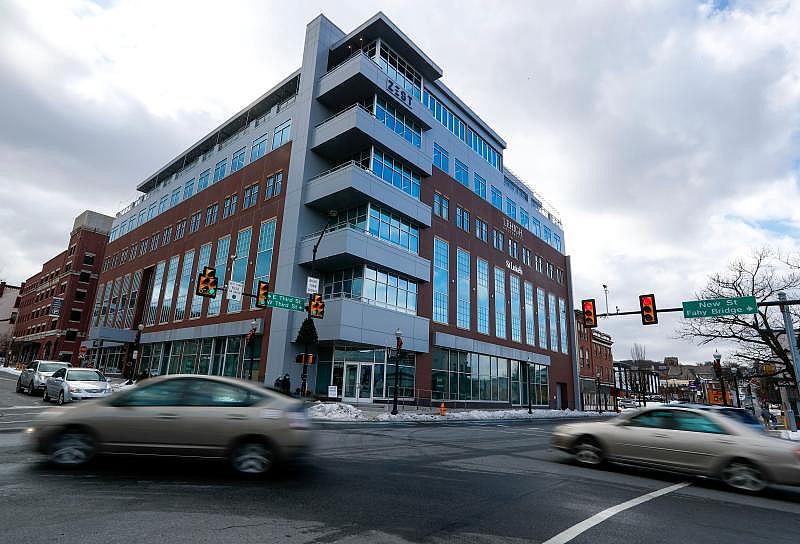
Now, residents are watching new developers chart the history of their historic downtown in a way that feels bitterly reminiscent for many.
This sense of living in a threatened place, with a long history of elected officials, developers and anchor institutions deciding its future without regard for what residents want, is never far from the surface. For some, skepticism of City Hall fuels apathy; for others, activism.
“It feels to me as if the city is already in agreement with developers and in bed with developers as opposed to listening to the community and protecting the historical value of our community and what makes us unique and what the community residents want,” Hernandez said.
A fight for the future
Some recent development proposals definitely fall, for many residents, into that category of “something being done to Southside.”
The new developments pitched for the South Bethlehem historic district often spend months in limbo before the local review board as building heights and facades get hashed out. Developers invest tens of thousands on building designs that later get scaled back.
The city effort to cap building heights in the district aimed to streamline the process and strengthen protections, yet residents panned it. The resulting conflict leaves developers frustrated and city leaders at a loss as to how to reconcile the different factions.
“People are clinging to a past and history that is already gone and refusing to go into the future at a real cost,” said Benner, the developer. “By scaling these things back, you don’t get the best projects you would. Rafael Palomino’s building is the best example of that.”
El desarrollador urbano y restaurador Rafael Palomino, planea demoler esta franja de edificios para dar paso a su proyecto de nueve pisos de altura. La fachada estilo italiano del edificio central se incorporará al nuevo diseño. Saed Hindash | Para lehighvalleylive.com
Palomino reduced his proposed 13-story, 80-unit apartment building to nine floors and 61 apartments, with six dedicated to affordable housing. As the proposed height dropped, the building lost rooftop amenities, units and some architectural features. Palomino spent close to six figures on the architectural design alone. He has city approval to raze the structure, but is awaiting city council approval on the design.
Still, he says he’s not bitter.
“You have a starting point and you have a finished point and it was just a process of being able to get positive feedback from the community,” he said. “Not everybody wanted a building there, but I think a lot of people did. They see it will generate more people able to go to the local retail shops and restaurants.”
Two of the most polarizing developments in recent Southside history sit across the street from Palomino’s project: One is a new 626-space parking deck. It’s connected by a gleaming, glass pedestrian bridge to the other much-decried project: Gateway at Greenway Park, a six-story, mixed-use Benner development that is still not fully leased three years after it was built. It stands on the site of a former community garden that the city sold to Benner for $70,000.
It is one of those buildings about which some Southsiders quip: “That would never get built on the north side of town.”
JC Jewelry and Gifts owner Juan Colello’s shop sits two doors down from Rivas’ Car Village. He feels left behind by developments like the Gateway at Greenway Park, where, in August, both of the anchor spaces remained empty. (A new eatery, Zekraft, opened in October. It sells artisanal toasts and salads in a jar.)
“All of these buyers buy everywhere and leave it empty for years,” Colello said. “... They don’t want a small business like me in there. They want big chains, I think.”
Hengeveld, the local coffee shop owner, expects these new developments will create a more homogenized downtown because small business owners can’t afford the rent or cost to build out the new spaces.
Drawn by the mom-and-pop feel of the Southside business district, Hengeveld and his business partners in 2016 opened Lit Coffee Roastery and Bakeshop, 26 E. Third St. They were welcomed into an enclave of small businesses that cross-collaborate and patronize each other, something he likened to a Sesame Street atmosphere.
“This is something special we should fight to hold onto down here. … We’re starting to see businesses with ownership not quite as invested personally in living here,” Hengeveld said. “You don’t see the owner in the building, behind the counter anywhere. It is starting to feel like it is becoming a lot of franchises.

Benner said he cares deeply about Southside small business owners he’s leased to. The initial locally-owned restaurant anchoring the New Street building shuttered and another proposed anchor never opened its doors.
“They couldn’t make it because there’s not enough people down there to support it,” Benner said. “... There’s not critical mass. Without the density you aren’t going to get vitality. You aren’t going to get retail of any kind of consequence and you sure as hell are not going to get affordable housing.”
The future of Colello’s and Rivas’ businesses rests partly in the hands of Palomino and his partner Jeffrey Quinn, who plan to raze this strip of small businesses and apartments to make way for their mixed-use development with its 61 apartments and eclectic food court. They’re the first developers to commit to building any affordable units in a market-rate project; those six units helped garner support from former Mayor Bob Donchez and a majority of city council.
“I am Colombian. You have blue-collar workers in the area and (affordable housing) is needed for everybody,” Palomino said. “The Southside has so much to offer.”
Rivas, the owner of Car Village, remains conflicted about the changes. She lauded the city’s investment in the Greenway, a linear park bisecting the neighborhood on a former rail line. She welcomes new businesses into the downtown, but her own displacement by a wealthy developer is hard to swallow.
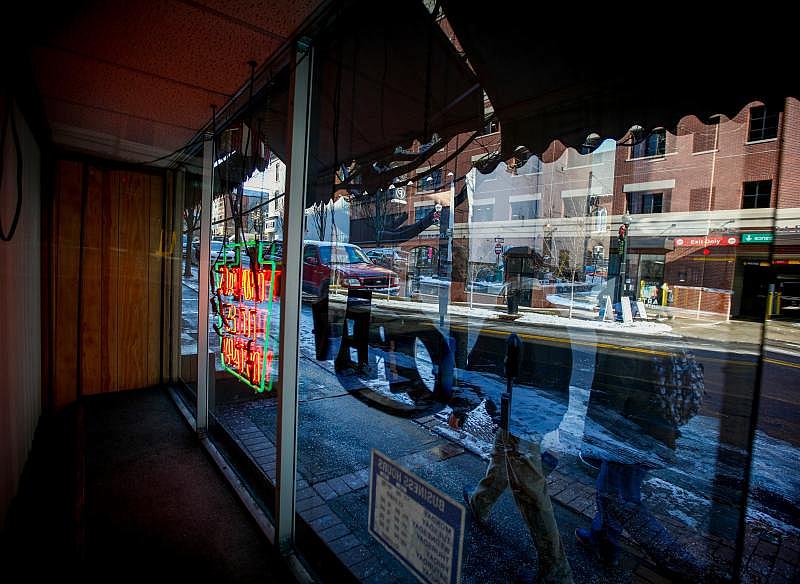
Car Village has played a pivotal role for the Southside for decades, Leon said. Its prior owner recognized the importance of always having a Spanish-speaking employee behind the counter and helped generations of newcomers assimilate to the area.
“You can’t talk about the Spanish community without talking about Car Village,” Leon said. “He became this central hub.”
Rivas wants to continue to serve her neighbors and the Lehigh community, but she needs a new commercial space.
After 325 South New Street Development LLC officially bought the property for almost $1 million in late October, Palomino sent his five tenants eviction letters asking them to move out by Feb. 28. The three apartments are renting for $700 a month, a steal in South Bethlehem currently.
“When the building got sold, of course, the owner of the building gets the money,” Rivas said. “We are offered nothing to leave and find a new location. I understand I have to leave. I get it, but hopefully he is nice enough to give us more time.”
On a recent January morning, Palomino and his five inherited tenants found themselves before the local district magistrate, who continued the case due to errors the landlord made filing the eviction. All of the tenants say they’ve been without working heat for more than a month. (Palomino thinks a fuse went out, something he says he is trying to fix. He promised space heaters in the interim.)
“When I bought it I should have said give it to me empty, don’t give it to me with the dirty plates,” Palomino said after the hearing.
In the hearing, Palomino sought to evict three tenants, including Rivas, over their expired leases. Two women renting apartments, one with cancer, are several months behind on the rent. The elder woman testified her rent checks were returned in the mail after the sale.
Outside of court, Palomino promised to work with the tenants and give them up to 90 days rent-free to find new housing or commercial space. He said he brought in a broker to help relocate Colello, the JC Jewelry and Gifts owner.
“I told them, you guys don’t have to pay me anything. You can save that money for when you move out,” said Palomino, who said he tried to put himself in their position. “I know rents are very expensive anywhere in the United States.
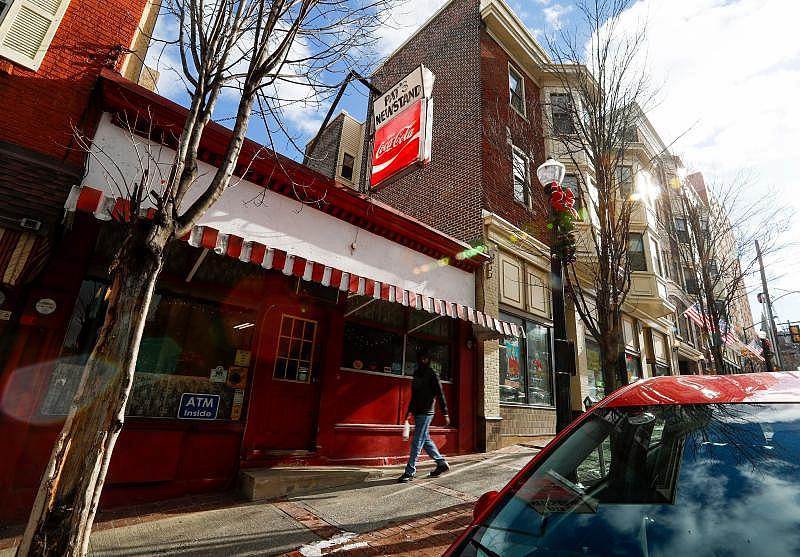
Not all Southside longtimers view the new developments as a mistake.
Irene Skelly sold her Your Welcome Inn to Palomino and his business partners in 2017, planning to open a new pub and restaurant. Skelly, who still operates her other, 47-year-old business, Pat’s Newsstand at 327 S. New St., hopes Palomino’s project continues her childhood neighborhood’s resurgence. She plans to retire whenever construction begins.
“It is great compared to the way it was when we first took over,” Skelly said on a late summer afternoon as customers played lotto tickets in the largely empty store. “It is a complete turnaround.”
But Palomino’s willingness to scale down his plan in response to Southsiders’ concerns earns him no plaudits from Moglen and other opponents of density and height.
South Bethlehem offers a rarity in urban living: affordable housing with a yard and city views, said Moglen, the Lehigh professor and Southside resident.
“One of the fantastic things about the Southside is it’s built into the hill,” Moglen explained. “The result is you can see your community from the windows of these houses. ... If you start putting up big, ugly sterile buildings that look like big, ugly sterile buildings everywhere else, that will vanish. There’s no retrieving it.”
The residents’ thorough mistrust of city officials fueled the flood of phone calls opposing the Palomino project during summer city council meetings, as well as the fierce resident backlash against the effort to set a new (and, recall, lower) height limit in Southside’s historic district during an April meeting unveiling the proposal.
“They only show their faces here around election time,” Ortiz, the volunteer who runs the Lynfield Community Center, said. “We aren’t stupid here. We know what is going on.”
Many residents hold out hope that 2022 could bring change.
A new mayor and a slate of progressive councilwomen, all speaking the language of equity and inclusion, were sworn into office this month. This marks the first time in city history a female majority governs the city of nearly 76,000.
Residents are largely supportive of a new city policy that for the first time links a tax incentive to affordable housing requirements. Developers of certain South Bethlehem properties, largely vacant lots, can receive a phased tax abatement but they must make 10% of their units affordable or pay a $25,000-per-unit fee to the city. To qualify for affordable housing in such developments someone would need to make 80% of the area median income or less. A single person maxes out at $45,840 a year and could pay up to $1,146 a month for rent and utilities, according to federal guidelines. The cut-off for a family of four is $65,500 with total housing costs up to $1,637. Officials hope to use that funding to bolster the city housing stock and rehab blighted homes. Some residents worry the fee is too low.
Bethlehem also convened an affordable housing task force, which Benner and another developer Michael Perrucci sat on.
“In all of the years I have been doing this work, almost 41, this is the most effort I have ever seen a local municipality put into trying to address (affordable housing),” Jennings, the recently retired executive director of community action, who also sat on the committee, said.
Many residents say they want the affordable housing requirements to apply to any property that’s developed. But the Pennsylvania planning code does not allow that.
Not everyone agrees that South Bethlehem is left out and overlooked.
Incoming City Deputy Director of Community and Economic Development Alicia Miller Karner, who led the department under the last administration, balks at the notion. She points to the long list of city plans studying the Southside in recent years, the work of Southside Vision and the arts district as prime examples.
She noted attempts to curtail building heights, the recently enacted student housing overlay district and the new affordable housing incentive as well, demonstrating how the city took residents’ concerns seriously.
New Councilwoman Leon concedes that the Southside has benefited from a lot of focused attention and development, but she thinks the rapid pace left damage in its wake.
“It has not benefited from it in a way that grows organically with the community that was there,” Leon said. “What if they had taken the moment to protect it and love it and think about it in the way they do High Street or anything on the northside?”

Benner is a Southside optimist, though not in a way that always jibes with residents’ wishes.
Benner sees great untapped potential in the area. He envisions a place like Manhattan’s SoHo, a trendy, and artsy neighborhood that is now one of the city’s prime shopping districts.
“I think it is very rare to find property so close to a university like Lehigh that has not been developed,” Benner said. “... I think it has the capability because of its location by the university to be an exciting, vital urban core where the young people will want to congregate if it is done right.”
Resident and historian Kimberley Carrell-Smith is not thrilled with Benner’s vision, but she objects to descriptions of Southsiders as against all development. She’s advocated for historic preservation that can drive symbiotic economic development.
“We … definitely need to find ways that the new may peacefully and profitably coexist with the old, while maintaining the historic connective tissue … which pays off economically and socially,” Carrell-Smith emphasized at a May city council meeting.
This sort of equitable community development — guided by those who live and work in South Bethlehem and are most affected by these changes — is just what Community Action Development Corporation of Bethlehem is working towards across the Southside business district and its residential blocks.
But it comes too late for Rivas, who remains hopeful Palomino sticks to his word.
“I understand this project is going to happen and we’ve got to go, but just give us some time,” she said.
They’ll be back in court on Wednesday.
Our journalism needs your support. Please subscribe today to lehighvalleylive.com.
Sara K. Satullo reported this story while participating in the USC Annenberg Center for Health Journalism’s 2021 National Fellowship, which provided training, mentoring, and funding to support this project. She may be reached at ssatullo@lehighvalleylive.com.
[This article was originally published by Lehigh Valley Live.]

